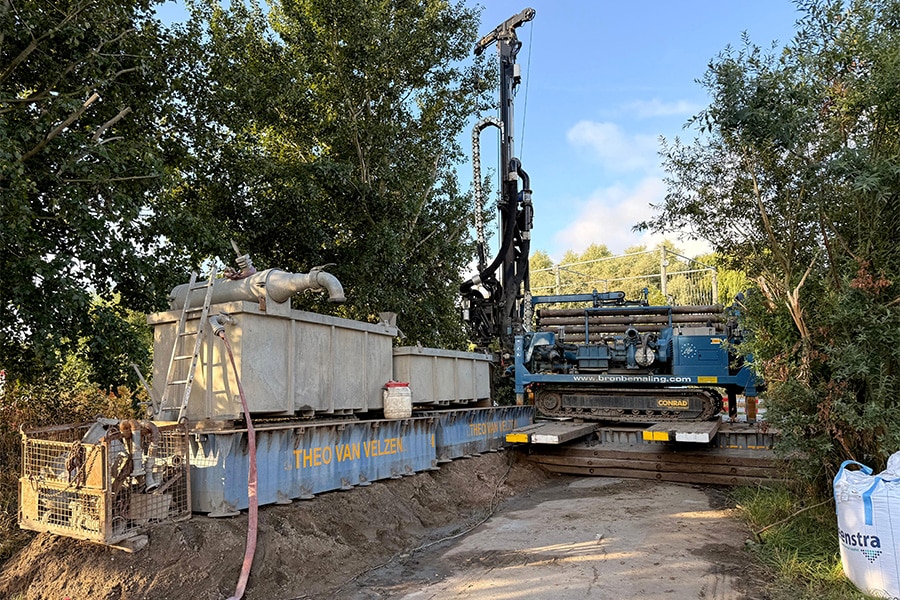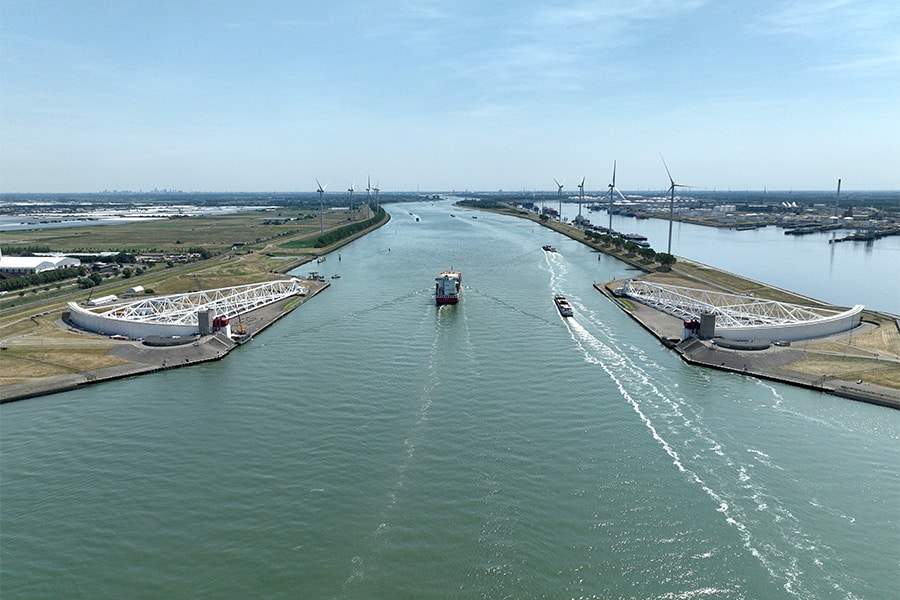
Building with nature
When we talk about sustainable construction, there is one company that really stands out: Van Aalsburg. A modern company that makes high-quality willow products such as laydowns, sinkers and shoring. "With us, innovation, craft, sustainability and excellent customer satisfaction come together," says Dick van Aalsburg, one of the six brothers who run the dynamic family business.
Sustainability deeply rooted
"We not only work with sustainable products, but sustainability is deeply rooted in our entire business operations," Van Aalsburg continued. This is evident in, among other things, the further electrification of the machinery. "We have purchased another electric crane that will be put to full use and two electric buses have also been ordered. We also have an EnergyHub that allows us to generate solar and wind energy on site that we can use to charge the crane and chainsaw batteries. We are also 100% self-sufficient thanks to a sea of solar panels on the building. And calculations show that with our 150 acres of willows, we capture as much as 3,300 tons of CO2 annually. More than double our company's emissions." Not for nothing has Van Aalsburg achieved the highest attainable level (5) on the CO2 performance ladder. "A result we are proud of."

Natural materials take center stage
The use of natural materials is also central in the civil engineering sector. Reducing the footprint is becoming increasingly topical. A lot of wood and plastic is still used in zinc pieces and shoring, while willow in combination with jute and corn cloth can be an excellent alternative, according to Van Aalsburg. "Where possible we like to apply all-natural materials, where necessary we look for a healthy combination." Together with Zwarts, the only Dutch producer of jute, Van Aalsburg embarked on an innovation process. "In terms of tensile strength, jute is largely equivalent to geotextiles, now we just want to get the durability up even further." TEFAB, the former T&F - a trading company for civil engineering and infra, also sees a shift in the industry: clients and (semi)governments want to use no or as few plastics as possible in soil or banks. They, too, are participating in the innovation project.
Steps in the right direction
Meanwhile, in Belgium, along the Scheldt River, pilots have started to make a bank protection from jute, corn cloth according to Van Aalsburg's legacies principle. "We are working hard to see if we can make this as sustainable as possible. It won't be completely without the use of other materials, after all you need paving, but a more natural mix is certainly possible." Van Aalsburg is convinced that many sustainable structures can be made if LCA and EQI are properly considered during the design choices. "In any case, we are taking considerable steps in the right direction, and it's great that we can now work with this outside our national borders."
Heeft u vragen over dit artikel, project of product?
Neem dan rechtstreeks contact op met Van Aalsburg BV.
 Contact opnemen
Contact opnemen




